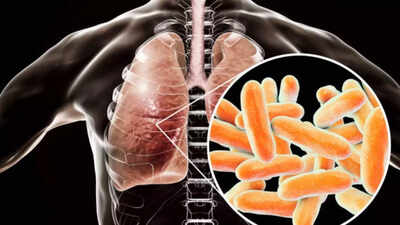What is Legionnaires’ disease? Know causes, symptoms, risk factors, prevention and more |

Legionnaires’ disease is a form of pneumonia caused by inhaling water droplets contaminated with Legionella bacteria, scientifically called Legionella pneumophila. Recently, an outbreak of the disease in Harlem, New York, has led to the death of one person and sickened 22 more. According to the Centers for Disease Control and Prevention (CDC), about 8,000 to 18,000 people are hospitalized with the disease in the US annually.Here’s all you need to know about the disease.
Causes of Legionnaires’ disease

Image credits: X
Legionella bacteria are intracellular, aerobic bacteria that are the agent of Legionnaires’ disease. They are commonly found in lakes, rivers, creeks, hot springs, and other bodies of water and grow at temperatures of 20 to 50 degrees Celsius.The bacteria was first identified in 1977 as the cause of an outbreak of severe pneumonia in a convention centre in the USA in 1976. The disease is transmitted due to the inhalation of aerosols from contaminated water containing the bacteria. The sources can be air conditioning cooling towers, hot and cold water systems, humidifiers and whirlpool spas, as per the World Health Organization.
Symptoms of Legionnaires’ disease

Image credits: Getty Images
According to the National Library of Medicine, Legionnaires’ disease is a severe infection with high complication and mortality rates that requires immediate hospitalization. It has two forms- non-pneumonic (Pontiac disease) and pneumonic.The non-pneumonic is an influenza-like illness that lasts for 2-5 days with an incubation period from a few and up to 48 hours. The symptoms of this can be fever, chills, headache, and muscle pain. It is non-fatal.The pneumonic form has an incubation period of 2-10 days and has symptoms such as fever, loss of appetite, headache, malaise, lethargy, diarrhea and confusion. There is also an initial mil cough. This can be fatal with the pneumonia progressing and leading to respiratory failure and/or multi-organ failure.
Who is at risk of Legionnaires’ disease?
People who are healthy and come in contact with the bacteria don’t fall sick. However, those above the age of 50, who have a history or present of smoking, have a lung disease and a weakened immune system, and can be susceptible to bacteria quickly.
Treatment of Legionnaires’ disease

Image credits: Getty Images
While the treatment for the disease exists, there is currently no vaccine for it. It can be diagnosed with the help of a chest X-ray to see if you have been infected. Then tests such as urine or sputum tests can be made to confirm the presence of bacteria.
Prevention of Legionnaires’ disease
The prevention of the disease relies on the control of the growth of the bacteria and the spread of the aerosols. This includes proper maintenance of cooling towers, maintaining an adequate level of biocide such as chlorine in waters, keeping hot and cold water systems clean and flushing unused taps on a weekly basis.




